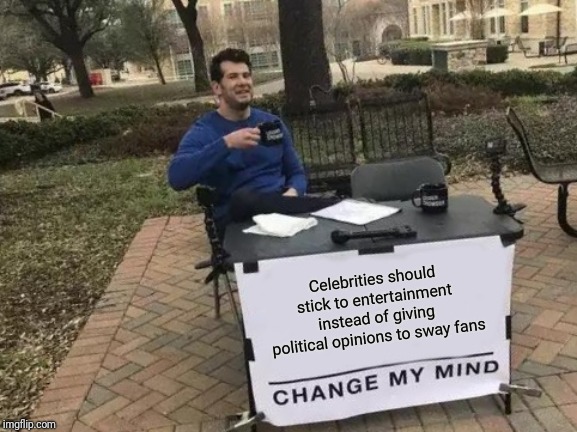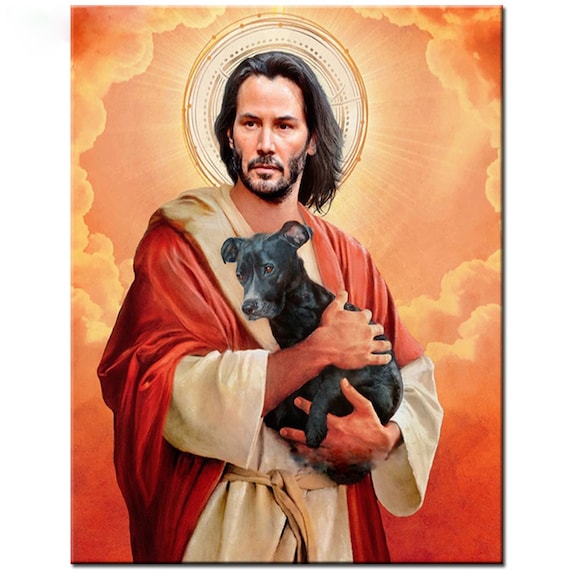8
DUE TO A SERIES OF UNFORTUNATE EVENTS, THE “NORMAL” CHAPTER OVERVIEW OF WEEKLY CONTENT WILL HAVE TO WAIT … As it stands, this is a murky assemblage of random bits that doesn’t yet make sense …


There are a number of explicit links to earlier concepts that are directly relevant to explaining the intersection of celebrities and participatory culture. In a link to previous discussions,
Contemporary political leaders are often represented and read in ways not dissimilar to celebrities drawn from the world of show business. Our relationship with politicians has thus become more intimate … while figures from the world of entertainment frequently endorse political parties and candidates or – deliberately or inadvertently – signify wider political movements.[1]
And, beyond talking about how celebrities are becoming politicians (and politicians becoming celebrities), it might also be useful to invoke the phenomenon of transfandom[2]. Remember, “like memes, transfandom works and spaces ‘constitute shared spheres of cultural knowledge’ or experiential ‘third spaces’ in which ‘multiple fandoms, texts, and meanings’ commingle and recombine in ways that, when successful, provoke what Roland Barthes adamantly calls the ‘bliss’ of intertextual recognition” (Morimoto, 2018, p. 78). Which is to say, fans go beyond searching across (trans) media for content related to their celebrity-object-of-affection; they also create content formed through the confluence of different fandoms.
Not to mention, anti-fandom clearly motivates some celebrity-oriented publics online.

Celebrity culture is, of course, indebted to participatory culture as fans and their affective labour are integral to the prominence of celebrities in popular culture. Celebrity doesn’t exist without audiences and their (sometimes feverish) attention: “Celebrity was, in its earliest usage, linked to ‘fame’; but it was also linked to the word ‘thronged’, a derivation indicating something of the activity around the celebrity, gesturing towards, for instance, the acts of talking about and congregating around them; a vibrant, social quality that is also connected to celebrity’s predecessor as a noun, ‘celebration’” (Littler, 2016, p. 119).[3]


[all the good stuff
PARASOCIAL
Parasocial interaction with media figures in an earlier era would typically be understood as a variety of pathology; a pseudo-social relationship with someone whom one doesn’t ‘really’ know, typically one-sided and often extreme in its affective nature. The extreme variety of this was the sick and obsessed fan who thought they ‘knew’ someone even though this was only through media representations, hysterical or manic in their pursuit of a relationship. “Attention to participatory culture flips the script. It looks at the way such fans use opportunities to form networks that: express their collective intelligence; enable their individual creativity; help them to educate themselves and to discover their civic power” (Duffett, 2018, p. 473). However, as Duffett points out, such transformative practices do not provide the full rationale explaining fans’ reasons for loving an object of affection (such as a band or musician, or artist, or actor…). Parasocial relationships are part of why people get passionate and why they are motivated to participate in media-based publics, but they do not do justice to their agency.
PUBLICS
To some extent, we’ve been addressing the distinction between audiences and publics since the beginning of this course/book.[4] As the discussion of Lady Gaga and her “little monsters” indicated, the easygoing division between audiences as being entertainment-based and publics as being concerned with social and political change no longer holds. This is especially the case with groups of fans organizing themselves via social media, encouraged by seemingly easier access to and more direct contact with celebrities (Click, Lee, & Holladay, 2017, p. 608). With the internet, “members of a public – a group of people commonly affected by an issue’ (Clark, 2009, p. 11), can come together more easily in shared discourse and thus shared identity and, ultimately, maybe, shared purpose. Through this shared activity, audiences come together to form “networked publics,” not necessarily an imagined community[5] but an imagined collective. The emphasis upon the plurality of these publics is important. As Chantal Mouffe argued, “Public spaces [are] the battle- ground in which different hegemonic articulations are confronted. They are plural, always striated. … [T]here always exists a multiplicity of struggle” (cited in Schrag, 2022, p. 3). Publics always contest with other publics for prominence on the public agenda, often striving to fashion their particular opinions into more generalized public opinion. “There is therefore neither a single “public,” nor a single manifestation of hegemonies. How, to what extent, and for whom a public might engage in the public domain is a political act” (Schrag, 2022, p. 4).
It is the algorithmic dimension that accounts for the dissipation of ‘publics’ and that shapes a crucially different ‘public’ environment from that of the previous generation” (van de Ven & van Gemert, 2020, p. 2).
In a link to next week, it might be useful to remind ourselves of the basic definition of celebrity as “a person well-known for [their] well-knowness” (Boorstin, 1961, p. 57). With this focus, we can see that “celebrity is, in Boorstin’s other term, a ‘pseudo-event’, a phenomenon which is not based around talent, which is not organic and ‘real’, but ‘manufactured’; one which is dependent on the puffery of the PR industry” (Littler, 2016, p. 121). While frenzy around celebrity can be grassroots in origin, it is ridiculous to assume that much of this “buzz” is not also the product of strategic communication industries, created, packaged, and sold to audiences who willingly consume and recirculate it. “The idea of having more direct access to the celebrity through their Twitter feed, for example, has ignited the excitement of both fans and publicists” (Littler, 2016, p. 125). We turn, specifically, to the latter concern in the next chapter.
References
Boorstin, Daniel. (1961). The Image.
Clark J (2009) Public Media 2.0: Dynamic, Engaged Publics. Washington, DC: Center for Social Media at American University. Available at: http://www.centerforsocialmedia.org/resources/ publications/public_media_2_0_dynamic_engaged_publics/
Click, Melissa A, Lee, Hyunji, & Holladay, Holly Willson. (2017) “‘You’re born to be brave’: Lady Gaga’s use of social media to inspire fans’ political awareness.” International Journal of Cultural Studies, 20 (6), 603–619.
Duffett, Mark. (2018). Understanding Which Fandom? Insights from Two Decades as a Music Fan Researcher. In P. Booth (Ed.), A Companion to Media Fandom and Fan Studies (pp. 463-476). Wiley.
Littler, Jo. (2016). Celebrity. In T. Miller (Ed.), The Routledge companion to global popular culture (pp. 119-127). Routledge.
Schrag, Anthony. (2022). The Paradox of Play. Public Art Dialogue, 12(1), 1–4.
van de Ven, Inge, & van Gemert, Ties (2020): Filter bubbles and guru effects: Jordan B. Peterson as a public intellectual in the attention economy, Celebrity Studies, DOI: 10.1080/19392397.2020.1845966
- Sandvoss, Cornel (2013) "Toward an understanding of political enthusiasm as media fandom: Blogging, fan productivity and affect in American politics." Participations: Journal of Audience & Reception Studies, 10(3), p. 253. ↵
- (a key concept from last week's discussion of 'civic fandom') ↵
- The title Leo Braudy's 1986 book on celebrity culture, making sense of it over time, testifies to the importance of fans propping it up: The Frenzy of Renown: Fame and Its History. ↵
- See the discussion in chapter two, "Active & Interactive Audiences in Participatory Culture. ↵
- See Benedict Anderson... ↵

